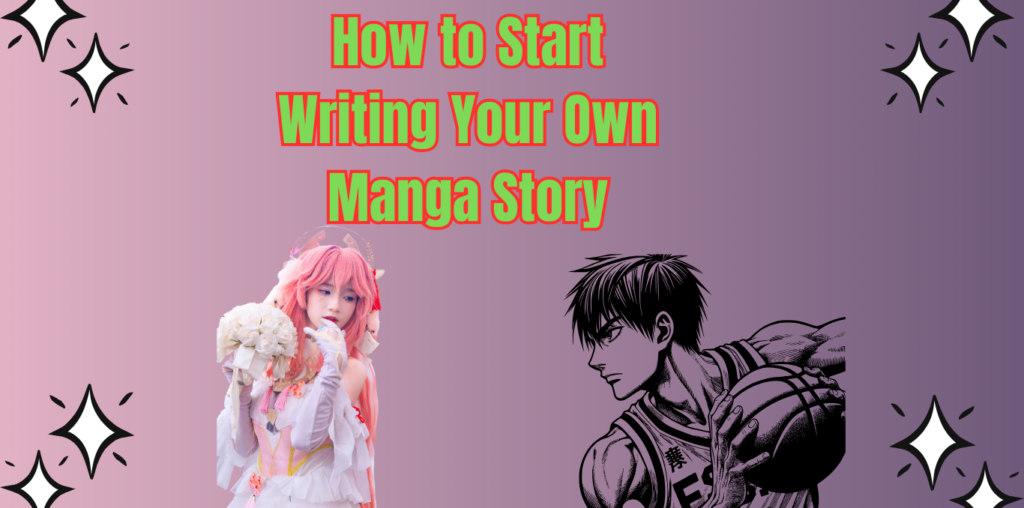Manga has captivated audiences worldwide with its stunning visuals, dynamic storytelling, and unforgettable characters. Have you ever dreamed of creating your own manga story? Whether you want to craft a thrilling adventure, an emotional drama, or a hilarious comedy, the process of writing your own manga requires creativity, planning, and dedication. In this guide, we will walk you through the essential steps to start writing your own manga. We will also discuss platforms like Manga go, where you can find inspiration and showcase your work.
1. Understanding Manga and Its Unique Storytelling Format
Before you start writing your manga, it’s essential to understand what makes manga unique. Unlike traditional novels, manga uses a combination of illustrations and dialogue to tell a story. Panel layouts, pacing, and visual storytelling play a crucial role in delivering emotions and action.
Manga is typically divided into different genres such as shonen (action/adventure for young boys), shojo (romance/drama for young girls), seinen (mature stories for adults), and more. Understanding these genres will help you determine the direction of your story and identify your target audience.
2. Finding Your Story Idea and Theme
A great manga starts with a strong concept. Think about what kind of story you want to tell. Do you want to write a fantasy epic, a slice-of-life romance, or a thrilling mystery?
Themes add depth to your story. Whether it’s the struggle between good and evil, the power of friendship, or personal growth, having a central theme will keep your narrative cohesive. Keep a notebook where you jot down interesting ideas, unique characters, and compelling themes that inspire you.
3. Developing Your Main Characters
Memorable characters are the heart of any manga. Readers should be able to connect with them emotionally. Focus on creating well-rounded protagonists and antagonists who have clear motivations, strengths, and weaknesses.
Design your character’s personality, appearance, and background story. Give them distinct features, such as signature hairstyles, outfits, or expressions. A strong main character should also have a compelling goal or internal conflict that drives the story forward.
4. Structuring Your Story with a Solid Plot
A well-structured plot keeps readers engaged from beginning to end. Use a classic storytelling structure like the three-act format:
- Act 1: Introduce your characters, setting, and the main conflict.
- Act 2: Develop the conflict, introduce obstacles, and build suspense.
- Act 3: Deliver a satisfying climax and resolution.
You can also create a storyboard to outline key moments and visualize how each scene will flow. This will help you maintain good pacing and avoid plot holes.
5. Writing Engaging Dialogue
Manga dialogue should be natural and expressive. Unlike novels, manga relies heavily on character interactions to convey emotions and plot details.
Make sure each character has a unique way of speaking. Use short, impactful sentences for action-packed moments and longer, more introspective dialogue for emotional scenes. Remember to keep text bubbles concise to avoid overwhelming the reader.
6. Mastering Panel Layouts and Visual Storytelling
Since manga is a visual medium, panel composition is crucial. The way you arrange panels can affect the pacing and mood of your story.
Experiment with different panel sizes and shapes. Use larger panels for dramatic moments and smaller ones for quick actions. Pay attention to facial expressions, body language, and backgrounds to enhance the storytelling experience. If you’re not an artist, you can collaborate with an illustrator or use manga-creation software to bring your vision to life.
7. Editing and Refining Your Story
Once you have a draft of your manga script, it’s time to refine it. Read through your story and check for inconsistencies, pacing issues, and unnecessary details.
Seek feedback from friends, fellow creators, or online manga communities. Constructive criticism will help you identify areas for improvement. Don’t be afraid to revise your work multiple times to ensure it’s as polished as possible.
8. Publishing and Sharing Your Manga
After finalizing your manga, you’ll want to share it with the world. There are several ways to publish your manga, from self-publishing to submitting it to publishers.
Online platforms like Mangago provide a great opportunity for aspiring manga creators to showcase their work to a wider audience. You can upload your manga, gain feedback from readers, and even build a fanbase. Additionally, consider submitting your work to manga competitions or publishing it on webtoon platforms to increase its visibility.
9. Staying Motivated and Continuing to Improve
Writing manga is a long and challenging journey, but persistence is key. Set realistic goals for your progress and create a schedule that allows you to work on your story consistently.
Keep reading manga to study different storytelling techniques and artistic styles. Learning from successful manga creators will help you refine your craft. Most importantly, don’t give up! Even if your first attempt isn’t perfect, every story you create will bring you one step closer to mastering the art of manga writing.
Conclusion
Starting your own manga story is an exciting and rewarding process. By understanding manga’s unique storytelling elements, developing strong characters, and mastering visual storytelling, you can bring your creative vision to life. Whether you choose to publish your manga traditionally or share it on platforms like Mangago, the most important thing is to keep creating and improving. Now, grab your notebook and start writing your manga masterpiece!




